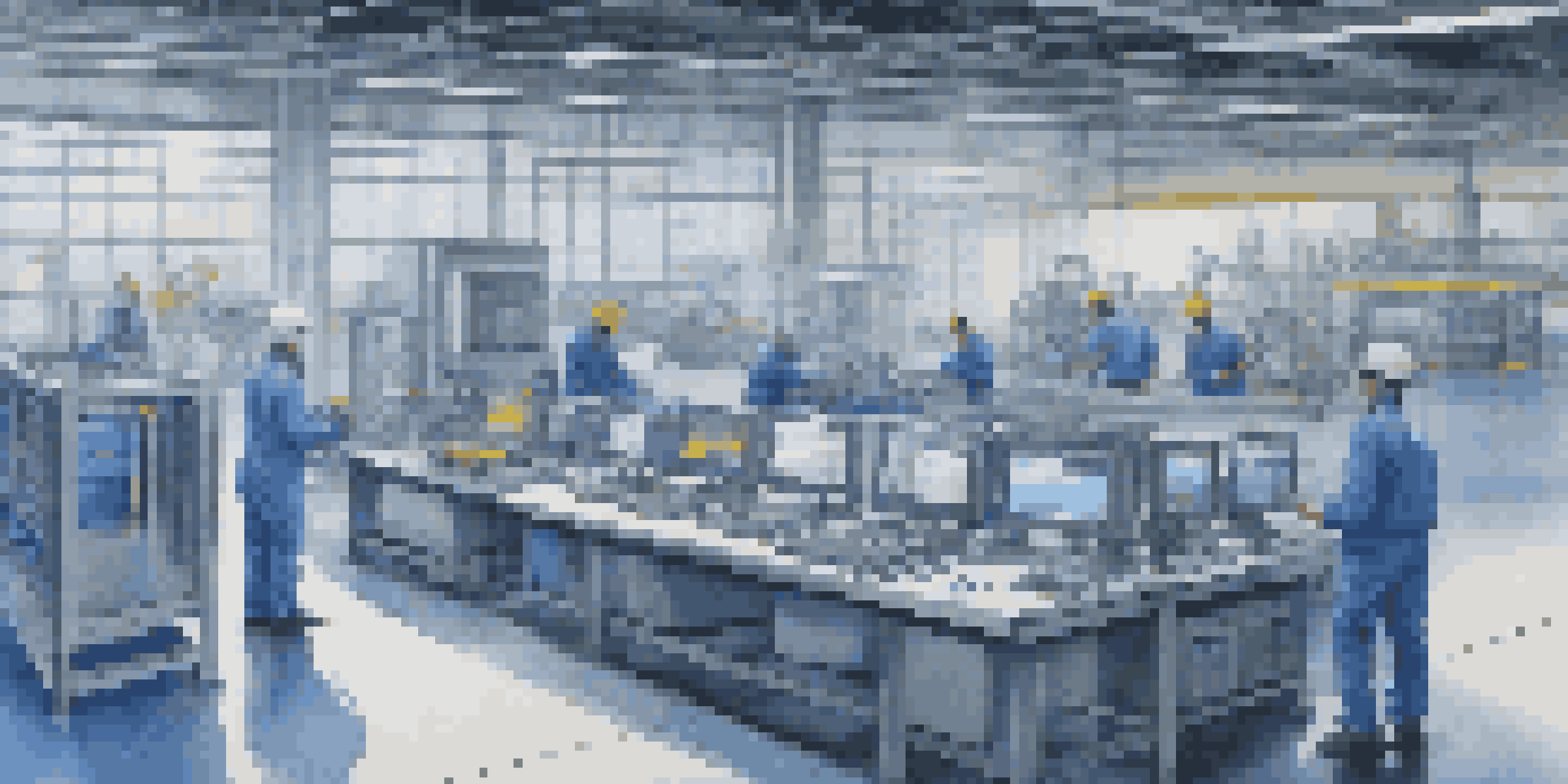The Evolution of AI in Predictive Maintenance Practices

Understanding Predictive Maintenance: A Brief Overview
Predictive maintenance is a proactive approach that uses data analysis to predict when equipment failures might occur. By assessing the condition of equipment, organizations can schedule maintenance at optimal times, reducing downtime and costs. This strategy not only improves operational efficiency but also enhances the lifespan of machinery.
The key to maintaining a competitive edge is to continuously improve your maintenance strategies through predictive maintenance and AI technologies.
Traditionally, maintenance practices were reactive, often leading to unexpected equipment failures and costly repairs. With the advent of technology, companies began adopting more data-driven approaches. Predictive maintenance emerged as a solution to these challenges, paving the way for smarter, more efficient industrial operations.
As industries continued to evolve, so did the methods and tools used for predictive maintenance. The integration of advanced technologies has played a significant role in shaping the field, setting the stage for the incorporation of artificial intelligence.
The Role of AI in Enhancing Predictive Maintenance
Artificial Intelligence (AI) has revolutionized predictive maintenance by introducing sophisticated algorithms that analyze data more efficiently. These AI systems can sift through vast amounts of data, detecting patterns and anomalies that humans might miss. This capability allows organizations to anticipate failures before they happen, allowing for timely interventions.

For instance, AI can monitor vibration patterns in machinery, identifying deviations that signal potential issues. This real-time analysis empowers maintenance teams to make informed decisions, ensuring that maintenance is performed only when necessary. As a result, businesses can significantly reduce operational costs and improve productivity.
Predictive Maintenance Explained
Predictive maintenance uses data analysis to anticipate equipment failures, allowing for timely maintenance that reduces costs and downtime.
Moreover, AI-driven predictive maintenance can learn from historical data, continually improving its accuracy over time. This adaptability means that as more data is collected, the AI becomes increasingly proficient at predicting maintenance needs, further enhancing operational efficiency.
Key Technologies Driving AI in Predictive Maintenance
Several key technologies have emerged as vital components in the application of AI for predictive maintenance. The Internet of Things (IoT) plays a crucial role by connecting machines and sensors to collect real-time data. This connectivity allows for continuous monitoring, providing a wealth of information that AI algorithms can analyze.
Proactive maintenance is no longer a luxury; it’s a necessity for organizations aiming to enhance operational efficiency and reduce costs.
Machine learning, a subset of AI, is particularly important in predictive maintenance. It enables systems to learn from data patterns and improve their predictions over time. By employing machine learning techniques, organizations can refine their maintenance strategies, ensuring they remain ahead of potential equipment failures.
Additionally, cloud computing facilitates the storage and processing of large data sets, making it easier for businesses to implement AI solutions. With cloud services, companies can access powerful computing resources without needing extensive on-site infrastructure, democratizing the use of AI in predictive maintenance.
Real-World Applications of AI in Predictive Maintenance
AI-powered predictive maintenance is already making waves across various industries. For example, in manufacturing, companies are using AI to monitor machinery for signs of wear and tear, leading to significant reductions in downtime. This proactive approach not only saves money but also enhances the overall efficiency of production lines.
In the transportation sector, airlines and shipping companies are leveraging AI to predict maintenance needs for their fleets. By analyzing data from aircraft sensors or shipping engines, they can schedule maintenance before issues arise, ensuring safety and reliability. This application of AI is crucial in industries where operational delays can lead to substantial financial losses.
AI Enhances Predictive Maintenance
Artificial Intelligence improves predictive maintenance by analyzing large data sets to identify patterns, enabling proactive maintenance decisions.
Even in facilities management, AI is optimizing maintenance practices. Building managers use AI to monitor HVAC systems and other critical infrastructure, predicting failures before they disrupt operations. This widespread adoption of AI in predictive maintenance showcases its versatility and effectiveness across various fields.
Challenges in Implementing AI for Predictive Maintenance
Despite its potential, implementing AI in predictive maintenance isn't without challenges. Data quality is a significant concern; if the data collected from machines is inaccurate or incomplete, it can lead to misleading predictions. Organizations must invest in robust data collection processes to ensure the integrity of the information used for analysis.
Additionally, there is a need for skilled personnel who can interpret AI-generated insights effectively. Many companies may struggle to find the right talent to manage and utilize these advanced technologies. Bridging this skills gap is crucial for the successful adoption of AI-driven predictive maintenance.
Lastly, integrating AI systems with existing maintenance practices can be complex. Organizations must navigate the technical challenges of ensuring that new AI solutions work seamlessly with legacy systems, which can require significant time and resources.
The Future of AI in Predictive Maintenance
As technology continues to advance, the future of AI in predictive maintenance looks promising. We can expect to see even more sophisticated algorithms that can process data at unprecedented speeds. This evolution will further enhance the accuracy and reliability of predictive maintenance practices, allowing businesses to stay ahead of potential failures.
Moreover, the integration of AI with other emerging technologies, such as augmented reality (AR) and virtual reality (VR), may revolutionize how maintenance is performed. Imagine technicians using AR glasses to visualize data overlays while performing repairs, making their work more efficient and informed.
Future Trends in Maintenance Tech
The future of predictive maintenance will see advanced algorithms and integration with technologies like AR and VR, enhancing operational efficiency.
With increasing investments in AI technologies, businesses across various sectors will likely adopt predictive maintenance practices more widely. This shift will not only improve operational efficiency but also contribute to sustainability efforts by reducing waste and optimizing resource use.
Conclusion: Embracing AI for Future Maintenance Strategies
The evolution of AI in predictive maintenance represents a significant shift in how organizations approach maintenance strategies. By leveraging AI's capabilities, businesses can transform their operations, moving from reactive to proactive maintenance. This shift not only enhances efficiency but also leads to cost savings and improved equipment longevity.
As industries continue to embrace AI technologies, it's crucial for organizations to stay informed about best practices and emerging trends. By doing so, they can ensure that they are making the most of AI's potential to streamline maintenance processes.

Ultimately, embracing AI in predictive maintenance is not just about keeping up with the competition; it's about fostering a culture of innovation and continuous improvement. Organizations that invest in these technologies will likely reap the benefits, ensuring they remain at the forefront of their industries.